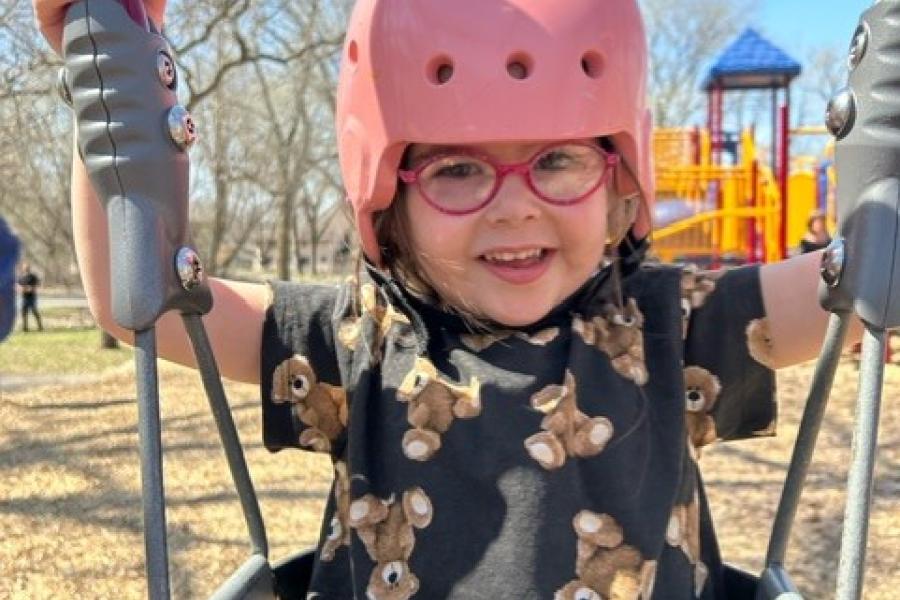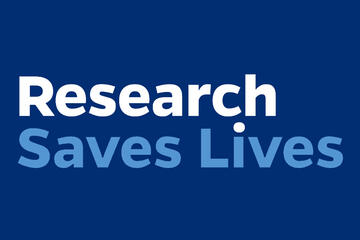- Name
- Kim Polyniak
- kpolyni1@jhmi.edu
- Cell phone
- 443-510-5807
- Name
- Paige Acevedo
- paigeace@jhu.edu
- Cell phone
- 301-938-8909
When she was 3 years old, Alana "Lani" Silverberg was eating a cookie when she started turning blue. Her mom, Sara, thought her daughter was choking and called 911. Lani was taken to Johns Hopkins Children's Center, where her parents got the news that Lani was, instead, having a seizure; her first of many.
Before that first seizure, Silverberg considered her daughter a firecracker. At 3 years old, Lani was full of life and had a big personality. But soon after, her daughter's life began to change. Her firecracker of a daughter became quiet, cranky, and had trouble sleeping, even though she was constantly tired.
Video credit: Johns Hopkins Medicine
"It was every parent's nightmare. Lani was having one large seizure a week. At one point, we didn't know what else we were going to do," Silverberg said.
She soon sought care for her daughter from pediatric neurologist Eric Kossoff, who diagnosed Lani with Doose syndrome. Also known as epilepsy with myoclonic atonic seizures, Doose syndrome is a rare type of childhood epilepsy. It causes seizures in young children that affect a child's whole brain. These seizures can often cause developmental delays or plateaus as well.
After multiple tests, it was discovered that Lani wasn't having one seizure a week, but nearly 40 seizures a day. She was having drop seizures, which cause the body to go limp and fall to the floor, as well as absence seizures, which can look like a child zoning out or their eyelids fluttering.
Lani was first put on medication to prevent the seizures, and also given a helmet to protect her during her larger seizures. That was until Kossoff recommended a treatment that shocked Lani's parents: the ketogenic diet. The ketogenic "keto" diet, which involves consuming high-fat foods and very few carbohydrates, is one of the oldest treatments for epilepsy. Johns Hopkins is a pioneer in this mode of therapy. The pediatric epilepsy team at Johns Hopkins has used the ketogenic diet to treat more than 1,500 children since 1994, but its use goes back to 1921, when it was first designed to treat epilepsy. Kossoff, who directs the Pediatric Ketogenic Diet Center, continues the legacy as one of the leading researchers into the diet.
This therapeutic diet is different from the fad diet that has grown in popularity during recent years. To be successful, the therapy calls for strict compliance, weighing of foods, and plenty of patience, especially in the beginning. Patients with epilepsy use the diet with the support of a team that specializes in the ketogenic diet. The Silverbergs also keep kosher, but the ketogenic diet can be adapted to any religion or cultural preference, even families who are vegetarian. Zahava Turner, the Johns Hopkins Children's Center lead ketogenic dietitian, also keeps kosher, which made the transition to this diet much easier.
Lani was admitted to Johns Hopkins Children's Center for three days, the standard of care for patients starting on this prescription diet. While there, she and her parents learned about the diet and how they would need to incorporate it into Lani's life. Just one month later, Lani stopped having seizures. Silverberg says her daughter began acting like her normal self again.
After two years, in April 2025, Kossoff told the family Lani could stop the diet. Without dietary restrictions and now able to indulge in sweets again, she and her family celebrated with a "sugar party" complete with a piñata.
Based on decades of research and clinical practice, Kossoff does not expect Lani to have another seizure.
"We knew it was a possibility there was a cure with the diet, but it feels like a miracle," Sara Silverberg said. "We are so grateful we found Dr. Kossoff. He changed her life."
Posted in Health









